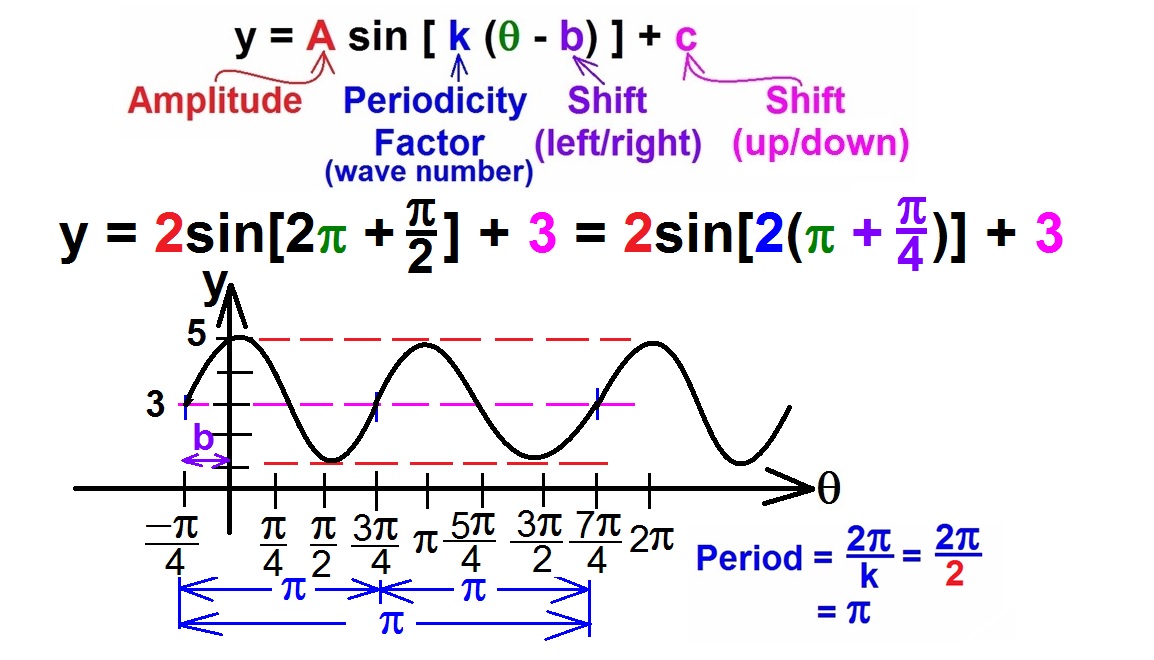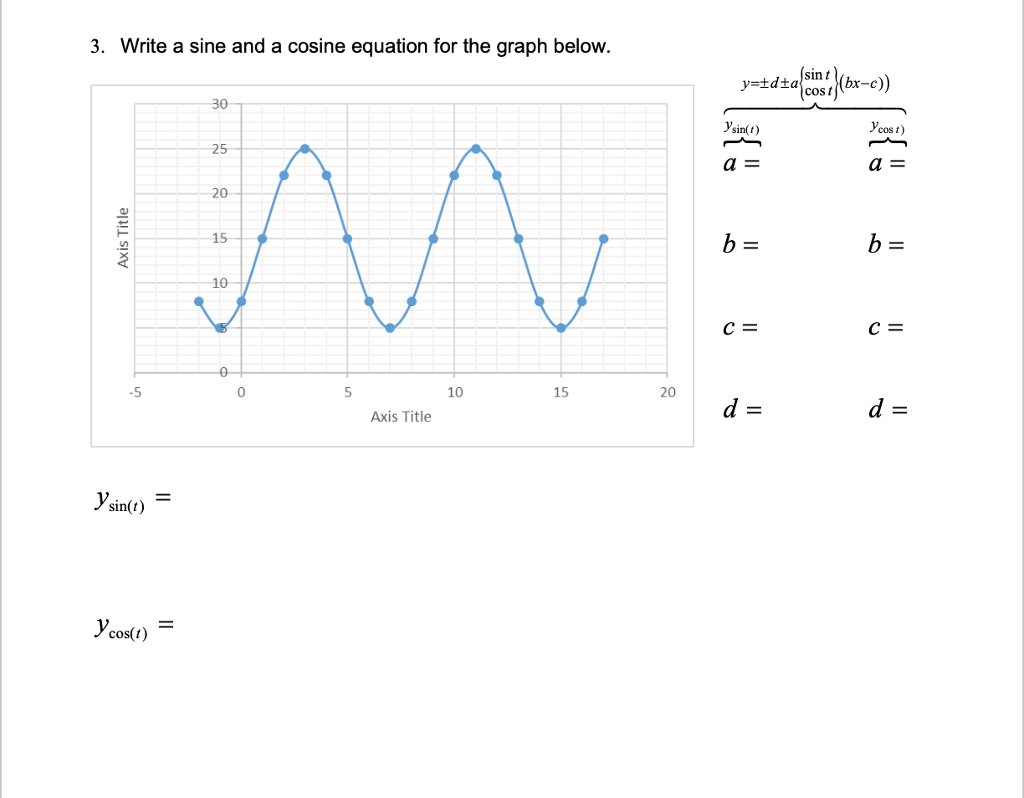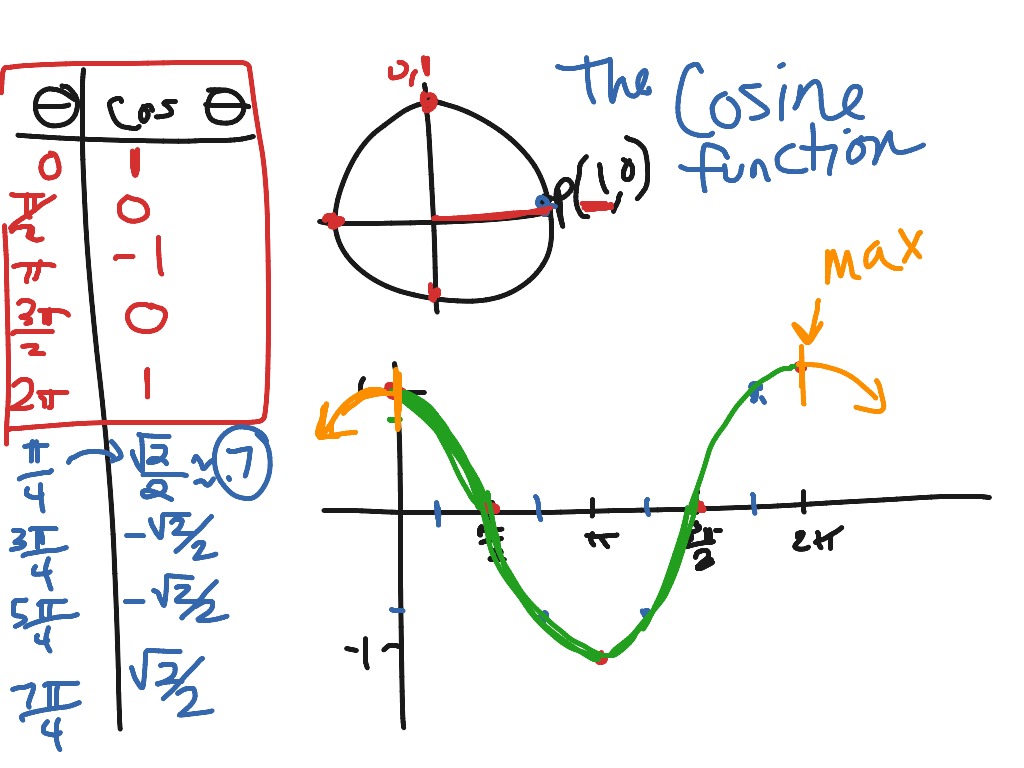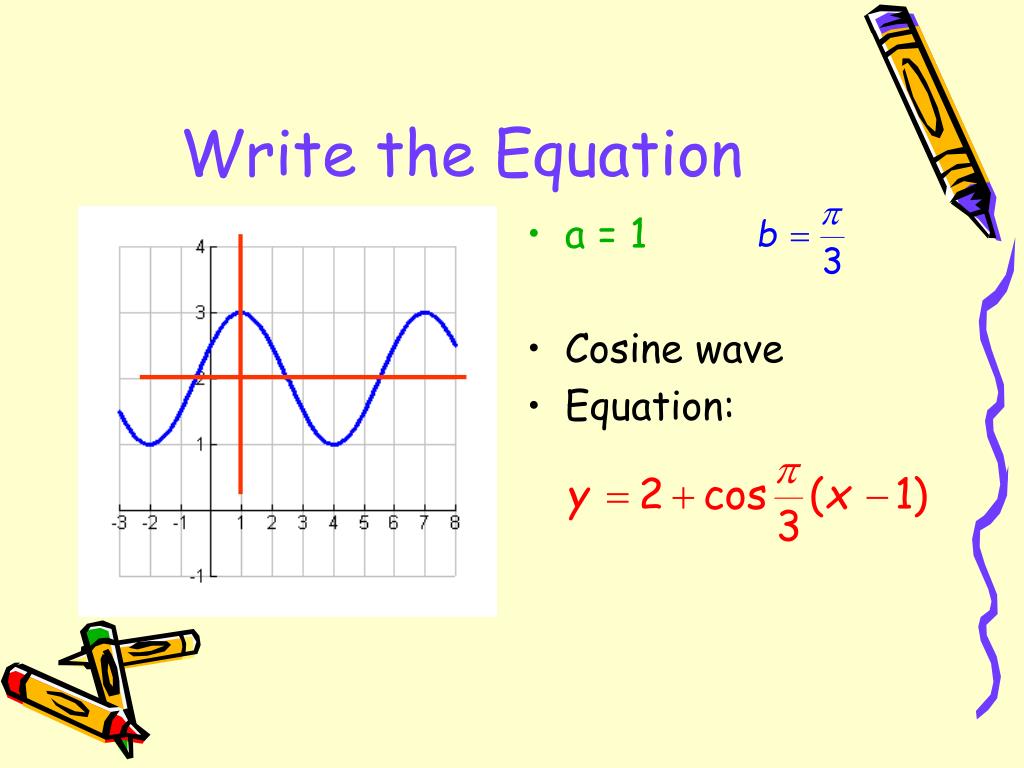Brilliant Info About How To Write A Cosine Equation

Let’s start with the midline.
How to write a cosine equation. Use trig identities to represent the whole solution set. In trigonometry, the law of cosines is also known as the cosine formula or cosine rule, relates the lengths of the sides of a triangle to the. Given a transformed graph of sine or cosine, determine a possible equation.
The law of cosines allows us to find angle (or side length) measurements for. How do you identify the vertical and horizontal translations of sine and cosine from a graph and an equation? From the definition of cos, it is now known that it is the adjacent side divided by the hypotenuse.
Since the cosine function has an. Utilizing the general equation for a cosine function, y = a c o s ( b ( x − d)) + c,. Writing the equation of a cosine function given properties of the function.
When \(x=0\), the graph has an extreme point, \((0,0)\). Determine the formula for the cosine function in figure \(\pageindex{15}\). A vertical translation is of the.
Writing sine and cosine equations from graphs. Given a graph of a sine or cosine. We can prove this by using the cofunction identity and the negative angle identity for.
Law of cosines formula. To reiterate, the cosine and sine are functions, so we. The graph could represent either a sine or a cosine function that is shifted and/or reflected.
Since the cosine function has an extreme point for x = 0, x = 0, let us write our equation in terms of a cosine function. Cos α = adjacent side/hypotenuse. To determine the equation, we need to identify each.
255k views 9 years ago ma notes 5. Solve a cosine equation with an infinite number of solutions. As per the cosines law formula, to find the length of sides of triangle say abc, we can write as;
We can see that the graph rises. Cos⁻¹(cos(θ)) = cos⁻¹((19/20) so in the lhs we take the cosine of theta, and then take the inverse cosine, which is just theta, so we have θ = cos⁻¹((19/20).

















